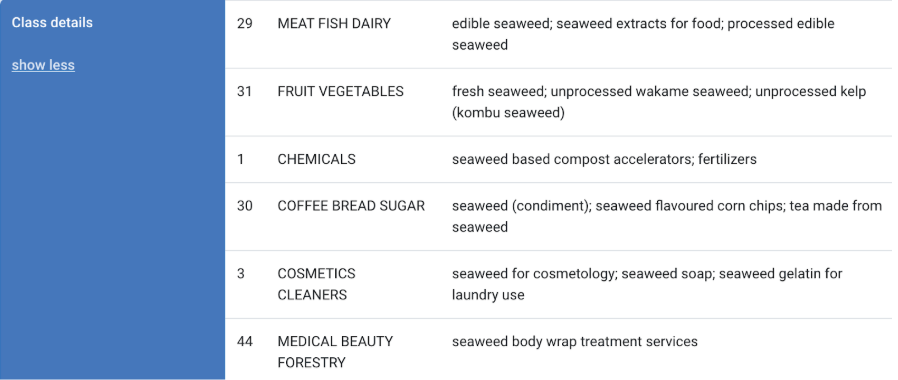Trademark Classes
Trademark classes are categories of goods and services. When you apply for a trademark, you must specify the goods and/or services you wish to protect your trademark for and identify the classes those goods and services fall in.
Every good or service falls into one of 45 classes (categories) used internationally and known as the Nice Classification system. You can file trademark applications in one or more of these classes. Each extra class you apply for typically brings with it extra fees.
Once registered, you have the exclusive right to use your trademark in that country for the goods/services covered – this is the substance of a trademark registration.
Almost every IP Office around the world uses the Nice Classification system for goods and services. The 45 different classes are made up of 34 classes of goods and 11 classes of services. For example, milk and dairy products fall into class 29 and software as a service falls into class 42. Here is a link to the Nice 11 list of classes including broad descriptions of what they cover.
Why are Trademark Classes Important?
Trademark classes help define the scope of trademark exclusivity.
Your registered trademark provides exclusive protection for your brand for the goods and services you specify - within their particular classes.
Some goods and services fall across multiple classes, so the classes help to further identify them or narrow them down.
For example, you may think that the term “seaweed” is quite self-explanatory and would only fall into one class. However, seaweed and seaweed related products and services fall across multiple classes: edible seaweed and seaweed extracts fall into class 2, while seaweed for composts and fertilizers fall into class 1. If you’re in the spa business, you may even be interested in protecting your brand for seaweed body treatment services - services which fall into class 44.
To further illustrate, here’s a list of classes that cover seaweed related goods and services:
Classes help trademark registries assess whether two trademarks conflict
When you apply for a trademark, the trademark registry will consider whether your trademark is likely to conflict with an existing trademark. Having a classification system helps trademark registries weigh up whether consumers are likely to be confused between your new mark and those marks that are already on the register.
Trademark registries may allow applications for identical or similar trademarks to those already registered if they cover sufficiently different goods or services. For example, in New Zealand, FLASH has been registered as a trademark by a number of different entities in the following classes:
Class 9 for software
Class 8 for protective clothing against electrical shock
Class 5 for herbicides
Class 16 for pens
The same or a similar trademark may in certain instances also be registered within one class, as long as consumers are unlikely to be confused about the origin of the goods and/or services provided by the different owners.
FLASH has also been registered by different entities for goods that fall in the same class:
Class 3 for soaps, cleansers and detergents
Class 3 for vehicle wash.
Tips for selecting classes and how DIY Trademarks’ system helps!
Selecting the most appropriate trademark classes is not always easy. It may help to first conduct a trademark name search to see how other traders in your industry have classified and registered their goods and services.
Usually, people who are not familiar with trademarks struggle to identify all the classes their goods and services might fall into, but our intelligent online trademark application platform makes selecting classes for your goods and services “hassle-free and lightning fast”. We’ve captured the mind of a trademark attorney in our AI-powered software!
With our system, you type in your key goods (or services) and in a flash our system lists all the likely relevant goods and services, including their possible classes. Then you can pick and choose the items you want to cover.
A couple of questions to think about when working what your key goods or services are:
What products will people buy from me? (Goods, eg “coffee” or “clothing”)
What will people hire me to do? (Services, eg “plumbing” or “accounting”)
Keep in mind that you are charged an additional fee for each trademark class on application, but don’t let this deter you from ensuring that you have the maximum trademark protection possible. While you can always try to register your trademark in a new class at a later stage, there’s always a risk that someone else might register a similar mark for similar goods in the intervening period and which ends up blocking your later application. Ideally, you should aim for the most comprehensive trademark protection from the start.



